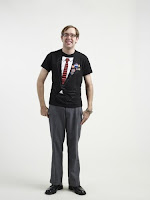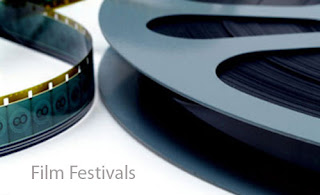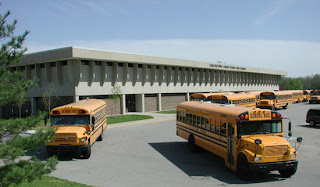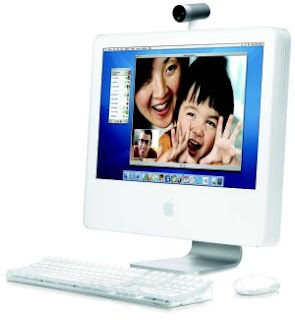I think my media product develops the typical conventions of a real rom-com as we had the same basic set up which meant it was how you would expect a rom-com to be. We had the love triangle with the stereotypical characters. These were based on the American 'jock' and 'cheerleader' type. However, as our film is set in England we just translated these characters to make the 'jock' character seem a complete idiot- and wrong for the girl. We changed the 'cheerleader' to a blonde girl who wore nice clothes and was very attractive, she never did anything wrong but came across as the 'popular' girl.
I do however think that our rom-com challenges the typical rom-com as it is set in only a few locations, and with not the best of actors. This is because we were low budget, and on a tight time schedule, which meant we could only use what we already had. If our rom-com was a real film, it would be set in a city with multiple locations that were so familiar that anyone could recognise. This would help it appeal to a wider range of people.
I think that because we did so much research into our genre before making our film (read books, looked up genre on internet, watched numerous rom-com films, analysed the beginning of many films), we understood a lot of the codes and conventions, the difficult part however was to put these into our film. I think our hard work payed off as it is easy when watching the film now, to see that it is a rom-com.
How does your media product represent particular social groups?
I think my media product represents 3 main social groups, which are often seen within high schools. I think anyone would be able to recognise these groups- the 'popular' and the 'geeks' and the 'jocks'. This is stereotypically mainly found in American schools more than anything, but I think that even in England there is still an element of difference.

 The popular people- who are always pretty, loud, look nice. We signified this by have Kate dress very attractively and having blonde hair, and having other friends and completely rejecting Nick. The geeky people- don't tend to have many friends, concentrate a lot on work, very shy. We signified this by having Nick wear old-fashion clothes- a denim jacket, he wore glasses and we made it seem like he was into rock music to make him seem even more of an outcast. The jock type- the boyos who are idiots, and mess everything up and behave in ridiculous ways. This was not signified within our opening sequence as this character is not seen much within the first 2 minutes.
The popular people- who are always pretty, loud, look nice. We signified this by have Kate dress very attractively and having blonde hair, and having other friends and completely rejecting Nick. The geeky people- don't tend to have many friends, concentrate a lot on work, very shy. We signified this by having Nick wear old-fashion clothes- a denim jacket, he wore glasses and we made it seem like he was into rock music to make him seem even more of an outcast. The jock type- the boyos who are idiots, and mess everything up and behave in ridiculous ways. This was not signified within our opening sequence as this character is not seen much within the first 2 minutes.I think we incorporated these into our film to appeal mainly to our age range. Our audience would typically be able to relate to these characters, and understand that this is what happens in school.
What kind of media institution might distribute your media product and why?

 Our production company is Stussy Media. This is a large production company, managing mainly UK films, from many genres. They would be interested in low budget films, as they don't cost much to make but if they take off, can make a lot of money and bring in a big profit. Stussy Media would be closely like to Like Media, which is a distribution company. This company would distribute many films. They would be entered into many film festivals to try and get their profile raised, any may get screened in a few independent cinema chains. Our film would mostly likely do this, and then get released straight to DVD, as it is unlikely to gain national distribution.
Our production company is Stussy Media. This is a large production company, managing mainly UK films, from many genres. They would be interested in low budget films, as they don't cost much to make but if they take off, can make a lot of money and bring in a big profit. Stussy Media would be closely like to Like Media, which is a distribution company. This company would distribute many films. They would be entered into many film festivals to try and get their profile raised, any may get screened in a few independent cinema chains. Our film would mostly likely do this, and then get released straight to DVD, as it is unlikely to gain national distribution.This is quite likely to happen in the media industry these days. The industry is getting increasingly tough for low-budget films with un-heard of producers, who cannot gain the funding to distribute their films. I think that myself and Lucy would send our film to as many film festivals to try and get our film recognised by anyone who would want to watch it. This would hopefully mean that the word would spread around about our film ad people would but it even from DVD.
Who would be the audience for your media product?
 The audience for our product is 15-24 year olds. This is because our film is set within a school, which would probably not attract older viewers. Also, the fact that we have young actors, would mean that a younger audience would find it easier to relate to them. A younger audience would also understand the situation better as it happens very often in high schools. The character stereotypes are very often found in schools and therefore they are recognised and having recently been students, our audience could really relate to this.
The audience for our product is 15-24 year olds. This is because our film is set within a school, which would probably not attract older viewers. Also, the fact that we have young actors, would mean that a younger audience would find it easier to relate to them. A younger audience would also understand the situation better as it happens very often in high schools. The character stereotypes are very often found in schools and therefore they are recognised and having recently been students, our audience could really relate to this.I think that younger people would possibly watch our film, but I wouldn't think they would be much younger than 15. People older could also watch the film, however I think our target audience would understand and enjoy it a lot more.
The rating of our film is a 15. This is because there is a swearing and a lot of pushing about. I think this also helps the audience be attracted to it because it is not seen as a 'kids' film but at the same time nothing too drastic. I think it is almost in between kids and adults, which is the same as 15-24 years olds are.
How did you attract/address your audience?
We attracted our audience by having our films set in a very familiar location- school. We made it humorous, but with a storyline that they would be able to understand and relate to. We used actors that looked like students, and the typical social groups seen within schools. We exaggerated certain aspects, such as the geek with his denim jacket and jeans and glasses, and when he was getting pushed into lockers.
We addressed our audience by getting feedback from 16-17-18 year olds. This is in the middle of our age range. We asked them questions such as; "did you catch the storyline?", "could you understand what was going on", "could you relate to it", "did you find it funny?", and the obvious "how could we make it better". From the feedback we found out a lot about what people of this age want from a film. We took their ideas into consideration and added and changed a lot.
What have you learnt about technologies from the process of constructing this product?
 I have found out just how handy Mac's are! We used Imovie to edit our film, it was very difficult to use at first, but we soon picked it up and found it easy. We learnt a lot from it, and it had lots of things to help us- such as music and sound effects. We also used Live Type to create our 'Stussy' logo.
I have found out just how handy Mac's are! We used Imovie to edit our film, it was very difficult to use at first, but we soon picked it up and found it easy. We learnt a lot from it, and it had lots of things to help us- such as music and sound effects. We also used Live Type to create our 'Stussy' logo. However, I had quite a few problems with my Mac- it crashed a lot, sometimes without saving my work and so it was extremely time consuming. I think if I were to do this again I would have chosen a Mac I know wouldn't of done this!
We also found some copyright free music on a website, and so we chose to use this is it fit quite nicely. However, as this was far too long we had to cut it up and do lots with it, so that it was perfectly in time with the film. Lucy was very good at this and therefore it does work extremely well I think!
The cameras that we used were also quite complicated in the first place, but I suppose everything is at first! Once we learnt how to work them they were easy. We never really had to alter the focus or lighting, so most of the time it was kept on auto.
Looking back at your preliminary task, what do you feel you have learnt in the progression from it to the full product?
We have also learnt about the cameras, and about camera shots and movement. In our prelim there wasn't much movement, just different shots that were quite jumpy- it didn't seem to fit. Whereas we have learnt now that you need multiple shots to break it up a bit, and if it doesn't fit- put a shot of something else (that still relates) in-between.
We have learnt much more about editing. We weren't really too sure on what you could do with Imovie before, however we are much more confident about using it and actually know what we are doing.
I think we are also aware that you need to be really sure about what you are going to film- which shots, where and when. You also need to take numerous shots while you’re there, even if it doesn't seem like you need it. This is so that you can fit much more in and if one thing doesn't work you've got the coverage to be able to swap it without reshooting. We also found that leaving the camera rolling a bit before and bits afterwards works well, as you get the full shot and aren’t cutting it a bit tight.
Getting feedback as much as possible from people within the target audience age is the key- you easily find out what they want and you can see their genuine reactions.
I've also learnt a lot about the genre, and a lot about producing. I think it’s really important that you cast the right people as well, to make sure it all looks good.













